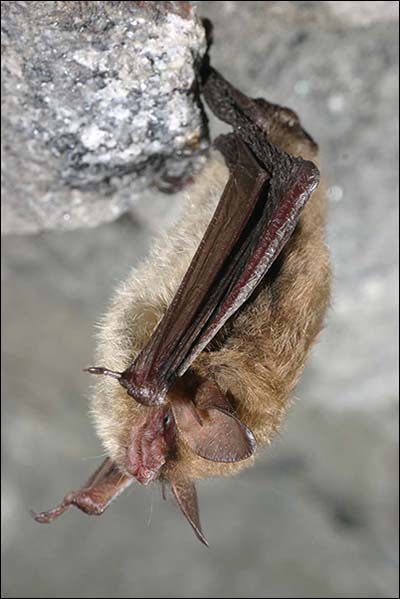 The U.S. Fish and Wildlife Service (FWS) has added the northern long-eared bat as a threatened species under the Endangered Species Act (ESA), primarily due to the threat posed by white-nose syndrome, a fungal disease that has devastated many bat populations.
The U.S. Fish and Wildlife Service (FWS) has added the northern long-eared bat as a threatened species under the Endangered Species Act (ESA), primarily due to the threat posed by white-nose syndrome, a fungal disease that has devastated many bat populations.
At the same time, the FWS issued an interim special rule that eliminates unnecessary regulatory requirements for landowners, land managers, government agencies and others in the range of the northern long-eared bat.
In the U.S., the northern long-eared bat is found from Maine to North Carolina on the Atlantic Coast, westward to eastern Oklahoma and north through the Dakotas, reaching into eastern Montana and Wyoming. Throughout the bat's range, states and local stakeholders have been some of the leading partners in both conserving the long-eared bat and addressing the challenges presented by white-nose syndrome.
The FWS had first proposed the northern long-eared bat as endangered in October 2013 following severe population declines that have seen the species disappear from some traditional hibernation sites. However, during its review, the FWS determined the northern long-eared bat meets the definition of threatened. Under the act, an endangered species is currently in danger of becoming extinct, while a threatened species is likely to become endangered in the foreseeable future.
‘Bats are a critical component of our nation's ecology and economy, maintaining a fragile insect predator-prey balance; we lose them at our peril,’ say Dan Ashe, FWS director. ‘Without bats, insect populations can rise dramatically, with the potential for devastating losses for our crop farmers and foresters. The alternative to bats is greater pesticide use, which brings with it another set of ecological concerns.’
Populations of the northern long-eared bat have declined dramatically in the eastern part of the bat's range due primarily to white-nose syndrome, a disease that has killed millions of cave-hibernating bats of many species in the U.S. and Canada.
White-nose syndrome has not yet been detected throughout the entire range of the northern long-eared bat and will not likely affect the entire range for some years. The species appears stable in areas not yet affected by disease, mainly in the western part of its range. It also still persists in some areas impacted by white-nose syndrome, creating some uncertainty as to the timing of the extinction risk posed by the disease.
Under the ESA, the FWS may implement special rules under section 4(d) for wildlife listed as threatened. Such rules enable the FWS to tailor protections of the ESA to those that are ‘necessary and advisable to provide for the conservation of such species.’ They also enable prohibitions that do not further the conservation of the species to be relaxed, reducing the regulatory burden on the public.
For areas of the country affected by white-nose syndrome, the measures provided in the interim 4(d) rule exempt ‘take’ resulting from certain activities. These include forest management practices, maintenance and limited expansion of transportation and utility rights-of-way, removal of trees and brush to maintain prairie habitat, and limited tree-removal projects, provided these activities protect known maternity roosts and hibernating caves. The interim 4(d) rule also exempts take resulting from removal of hazardous trees, removal of northern long-eared bats from dwellings, and research-related activities.
These measures are designed to protect northern long-eared bats when they are most vulnerable, including when they are hibernating and during the two-month pup-rearing season from June through July.
In parts of the country not affected by white-nose syndrome, the 4(d) rule recognizes that activities that result in incidental take of bats are not imperiling the species. These activities will be exempt from the act's prohibitions. Purposeful take, however, other than removal of bats from dwellings, is prohibited.
According to the FWS, the public is invited to comment on this interim rule as the agency considers whether modifications or exemptions for additional categories of activities should be included in a final 4(d) rule, which could be finalized by the end of the year.



